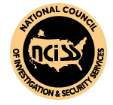If you are divorced or separated with children or you work with children, it’s important to be able to recognize the signs of child abuse and neglect. First, it’s essential to know that not all signs of abuse are physical. Abuse isn’t always unexplained bruises or broken bones. There are several types of abuse and each takes its toll and has different warning signs. Here’s how to recognize the signs of child abuse and neglect.
Types of Abuse
Abuse comes in many forms, not just physical. Abuse can include ignoring the child’s needs, exposing them to sexual situations, neglect, putting them in dangerous situations, leaving them unsupervised and making them feel worthless or stupid. Just because these other forms of abuse aren’t physical, doesn’t mean they aren’t just as harmful.
Emotional Abuse
Name calling, shaming, belittling, humiliating, yelling, bullying and withholding affection (hugs, kisses) are all forms of emotional abuse. Kids who suffer emotional abuse often have difficulty regulating their emotions because they cannot express their emotions safely, and thus those emotions can surface in unexpected ways. Emotionally abused kids are often withdrawn, anxious and fearful. They might also display a lack of trust and have difficulty discerning who is trustworthy.
Neglect
Failing to meet the child’s basic essential needs for food, hygiene, clothing and supervision falls under the category of neglect. Children experiencing neglect might seem unattached to the parent or caregiver. They might wear dirty or ill-fitting clothing. They might have body odor, dirty skin or hair, matted hair. They often have consistently bad hygiene and are frequently late or absent.
Physical Abuse
Hitting, slapping, punching and using fear of physical punishment as a means of controlling behavior are all forms of physical abuse. This is the most obvious form of abuse and thus it is often not the child’s first experience of abusive behavior directed toward them. Like abuse in adult situations, abuse of children tends to escalate over time. Kids suffering physical abuse might have frequent unexplained or poorly-explained injuries, seem afraid to go home, shy away from touch or flinch from sudden movement.
Sexual Abuse
Sexual abuse includes not only inappropriate physical contact but also exposing the child to sexual situations or sexual materials. Kids who have experienced sexual abuse can demonstrate knowledge of sexual behaviors that are not appropriate for their age. They might have difficulty walking or sitting. They might act out in sexual or seductive ways. They might refuse to remove clothing or change in front of their peers or other people, such as in locker rooms.
If you have a child, care for a child or work with children, it’s important to be able to recognize the signs of child abuse and neglect. A child’s life and wellbeing could depend on it. If you are a parent and fear abuse is happening while your child is with the other parent, we can help. Call Bulldog PI today to get the evidence you need to protect your child.










